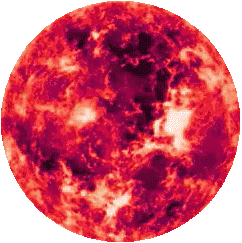
GJ 1061 Star System
The GJ 1061 Star System contains 1 Star and 3 Planets.
2 Planets are habitable planet candidates, planets GJ 1061 I and II.
The GJ 1061 Star System is located within near the inner rim of the Orion Arm, within the Local Fluff of the Local Bubble, between the Radcliffe wave and Split linear structures (formerly Gould Belt) in the Milky Way Galaxy, which is 26,000 light years away from the massive Sagittarius black hole at the center of the Galaxy.
/ Star & Planets / Stars & Planets List 0 to 20 Light Years / GJ 1061 Star System
70.495 Trillion Miles
11.9910 Light Years
3.6764 Parsecs
GJ 1061

M5.5V Class Red Dwarf
4,898 F Photosphere
GJ 1061 I
0.021 AU
Tidally Locked
1.38 (EM)
Super Terran
? Miles
? Density
? g
Atmosphere ?
Hot
Life ?
Moderate Flares
Main Sequence
7 Billion Years Old
Population I Star
Heavy Element Rich
1 AU = 92,955,807 Miles
Chemical Rocket Travel Time
119,910 Earth Years
Fission Rocket Travel Time
241.26 Earth Years
Fusion Rocket Travel Time
120.63 Earth Years
Laser Light Sail Travel Time
60.31 Earth Years
GJ 1061 Planets Probability to Host Life
GJ 1061 I: There are no confirmed chances for life on GJ 1061 I, as its potential habitability has not been directly established. However, it is a rocky planet, and receives less energy than Mars from the Sun.
GJ 1061 II (Obdikar): The chances for life on GJ 1061 II are currently unknown but remain uncertain, as the planet is Super Terran size, located near the inner edge of its star's habitable zone, where a runaway greenhouse effect may prevent surface water and life. While it could have a thick atmosphere that distributes heat from tidal locking, more research and data, especially from instruments like the James Webb Space Telescope, are needed to determine its atmospheric composition and potential for habitability.
GJ 1061 III (Keturam): The chances for life on GJ 1061 III are currently unknown but remain uncertain, as the planet is Super Terran size similar to GJ 1061 II, and is also located in the star's habitable zone. More data and research are needed to determine its potential for habitability.


I'm excited to see what the James Webb Telescope can reveal about the potential atmosphere of the planet GJ 1061 II and GJ 1061 III. This data will help us determine their habitability.